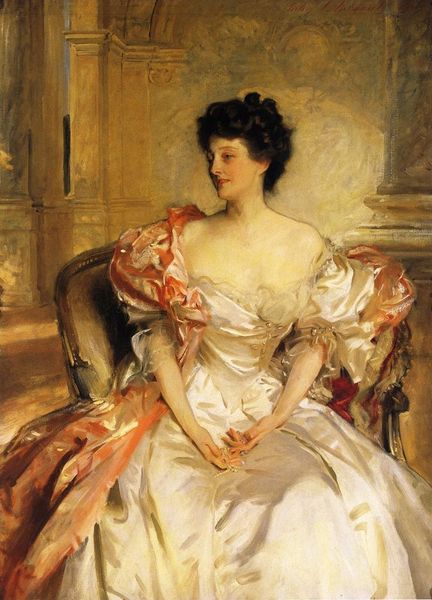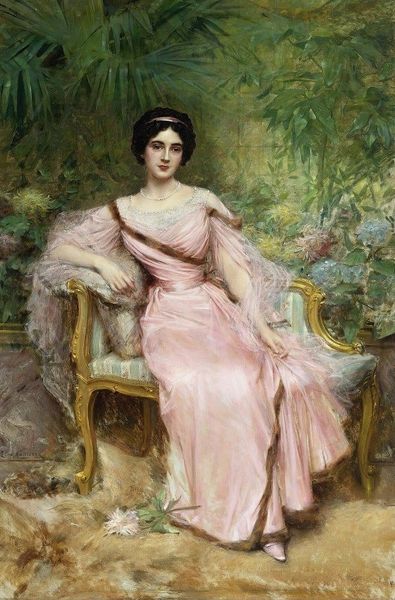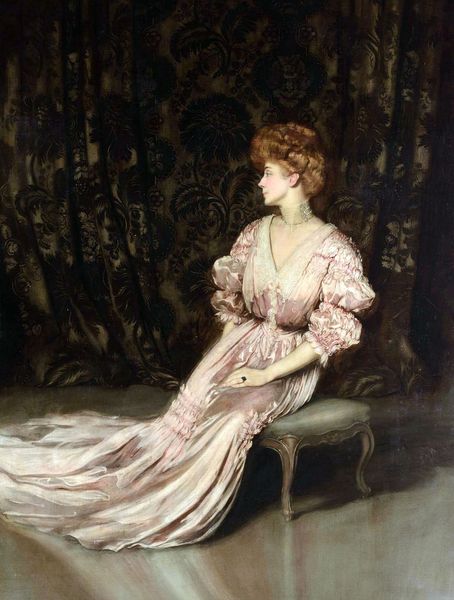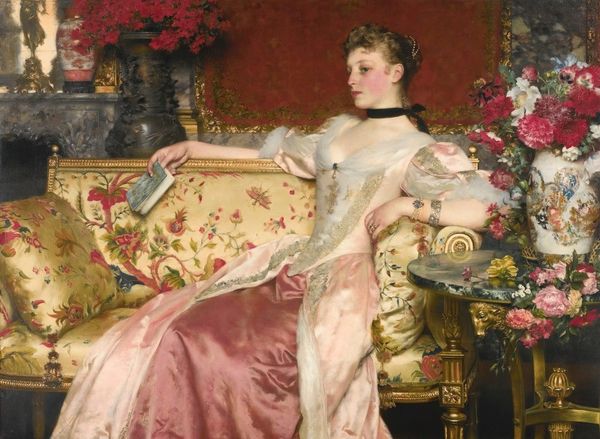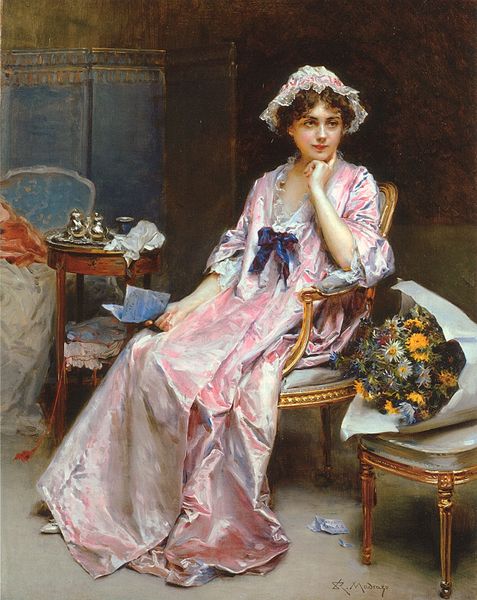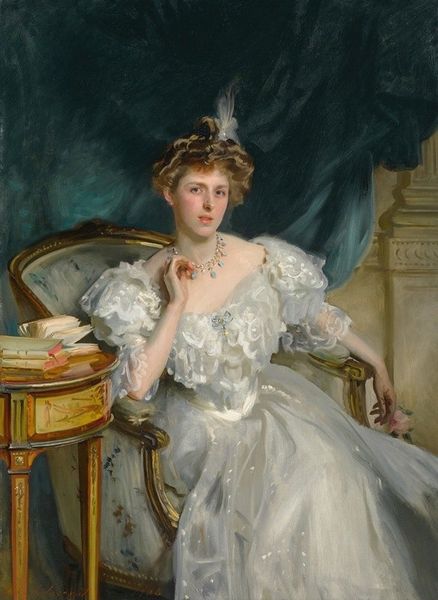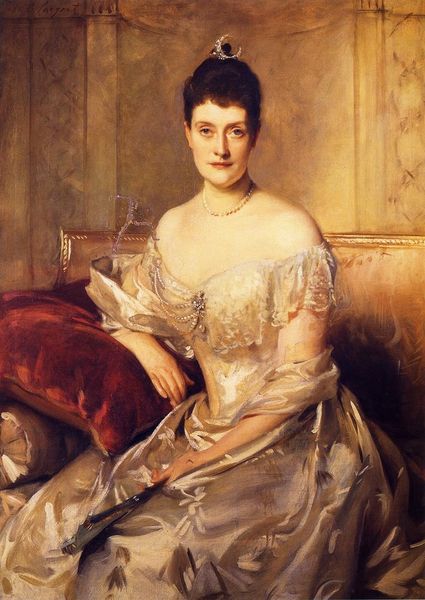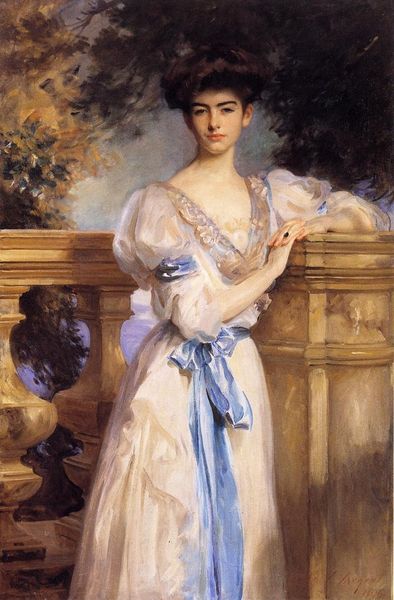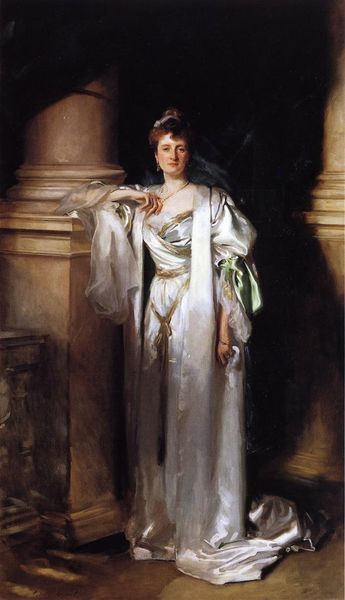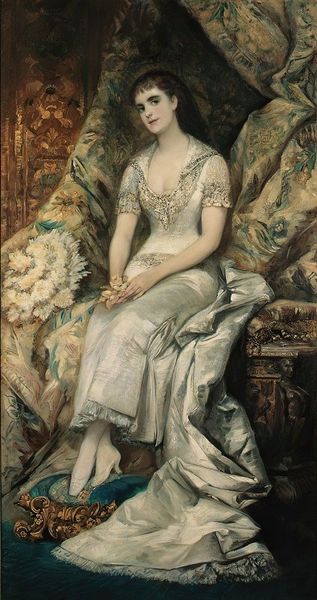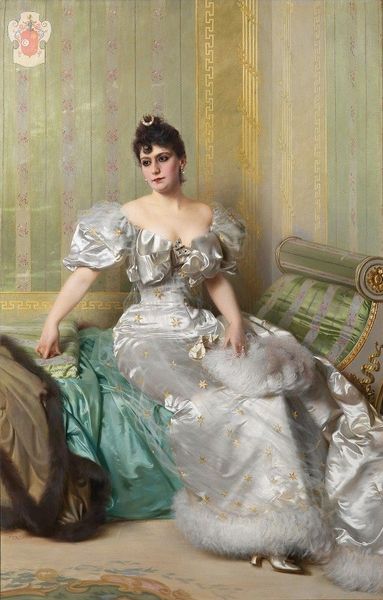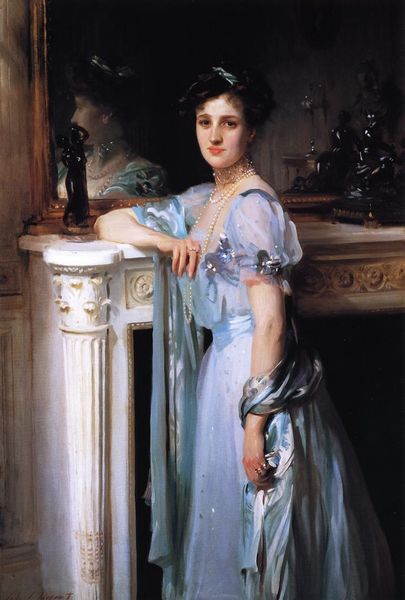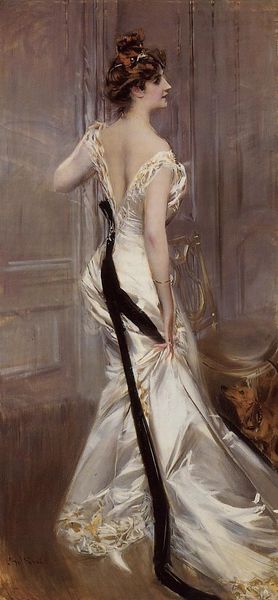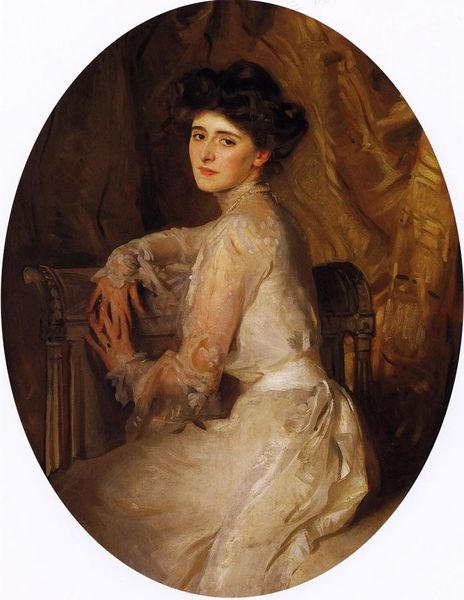
Mrs. Huth Jackson (Clara Annabel Caroline Grant Duff) 1907
0:00
0:00
johnsingersargent
Private Collection
Dimensions: 147.3 x 99 cm
Copyright: Public domain
Editor: Here we have John Singer Sargent's 1907 oil on canvas, *Mrs. Huth Jackson*. The subject reclines languidly. It's a pretty image, almost cloying. How do you interpret this work, especially given Sargent's wider body of portraiture? Curator: Sargent often straddled the line between glorifying and subtly critiquing the Gilded Age elite. This portrait of Mrs. Huth Jackson is undeniably beautiful, but let’s consider it through the lens of class and gender expectations. How does Sargent use pose and costume to portray her? Does it empower or confine her? Editor: I see your point. She looks almost like an object of beauty, draped in white fabrics. It seems to emphasize her wealth and status more than any personal qualities. Is Sargent perhaps making a statement about the roles women played in that era? Curator: Precisely. The elaborate setting, the luxurious dress – these aren't just decorative elements. They're signifiers of a social position reliant on leisure and display, subtly suggesting the limited avenues available to women of her class for self-expression or agency. Notice how her gaze avoids direct engagement. Editor: It's as though she's present, but not really *there*. The painting almost becomes a commentary on the objectification of women in elite society. I never considered Sargent this way before. Curator: Examining the portrait through a feminist lens uncovers those layers. It reminds us that even seemingly straightforward depictions can hold complex critiques of power and representation. What will you take away from this analysis? Editor: To never take an image at face value. There are always socio-historical narratives embedded in artworks, shaping not only their creation but also our understanding. It’s made me think about portraiture—historical and modern—in a whole new way.
Comments
No comments
Be the first to comment and join the conversation on the ultimate creative platform.
